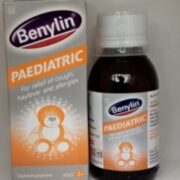7 Sure-fire Ways to Soothe Your Baby’s Teething Discomfort

Babies develop at different rates but generally, babies’ teeth start to appear from around 6 months. This period of development is plagued with fusiness, crankiness and tears both for the baby and parents.
According to Mayo Clinic, teething can cause signs and symptoms in the mouth and gums but not elsewhere in the body. Classic signs and symptoms include drooling, chewing on solid objects, irritability or crankiness as well as sore or tender gums. Many parents also suspect that teething causes fever and diarrhea, but researchers say this isn’t true.
Find tested and proven ways to ease your baby’s teething discomfort.
1. Cold Washcloth
Let baby gnaw on a frozen or merely chilled washcloth. The washcloth may be dipped in water or breast milk.
2. Teething Rings
Teething rings give your baby something to safely chew on, which may ease their discomfort and provide a distraction from any pain.
Some teething rings can be cooled first in the fridge, which may help to soothe your baby’s gums. Follow the instructions that come with the ring so you know how long to chill it for. Never put a teething ring in the freezer as it could damage your baby’s gums if it becomes very hard or cold.
Also, never tie a teething ring around your baby’s neck, as it may be a choking hazard.
A useful alternative to a teething ring is a cold, wet flannel.
READ ALSO: A Guide to Getting Your Baby to Sleep Longer & Better at Night
3. Teething Gels
Babies over three to four months old may benefit from age-appropriate sugar-free teething gel. These often contain a mild anaesthetic and sometimes an antiseptic. Apply it to the affected area with a clean finger. If a younger baby is troubled by teething, seek advice from your health visitor or GP.
4. Try Hard Foods
If your baby is eating solid foods, you might offer something edible for gnawing — such as a peeled and chilled cucumber or carrot. Keep a close eye on your baby, however. Any pieces that break off might pose a choking hazard.
5. Preventing Teething Rashes
If teething is making your baby dribble more than usual, make sure you frequently wipe their chin and the rest of their face. This will help to prevent them from developing a rash. You may also find it useful for your baby to sleep on an absorbent sheet.
6. Use counter-pressure
Run your freshly washed finger over those sore gums. The pressure might soothe the pain. Use your knuckles.Make sure your hands are washed, bend your pointer finger, and let him/her gnaw on your knuckle.Be aware that babies can chomp down fairly hard even without teeth!
7. Use over the counter pain reliever
Age-appropriate baby pain relief paracetamol or ibuprofen may help teething pain. Ask your doctor for appropriate prescription.
What teething pain relief remedies worked for your baby? Share with other mums below.



Noted. Thanks MIM
Thanks MIM
Thanks MIM for sharing. Banababe/Vit C
Nice tips MIM. Thanks for sharing.
Lovely tips, tanxs MIM
Noted
Noted
Noted
Noted
Thanks MIM, i use piccan for my baby
I learnt vit c and piccan or babyrex syrup helps too.
I use ordinary paracetamol baby syrup.
tanx mim
Thanks for sharing
Thanks for sharing
Noted
Piccan syrup works for me perfectly.I used it on my 4 children
Pic can it is or neurofen syrup